Overclocking
The map cannot really be overclocked. However, you get higher boost clock speeds automatically if you let the fan rotate a little higher. Then approx. 1920 MHz still possible, even if the card goes to work quite loudly. There is nothing else left, but the performance boost is very manageable, as our benchmarks have proved.
Temperature gradients and normal boost cycle in detail
The cooler is completely sufficient and keeps the card cool enough at a maximum of 63 to 64 °C in the open or closed housing. These values are not something that would be of concern now. The bar still plays along quite well and the disadvantage of the lower power limit remains within the manageable range. The 1830 to 1860 MHz are completely sufficient for acceptable performance.
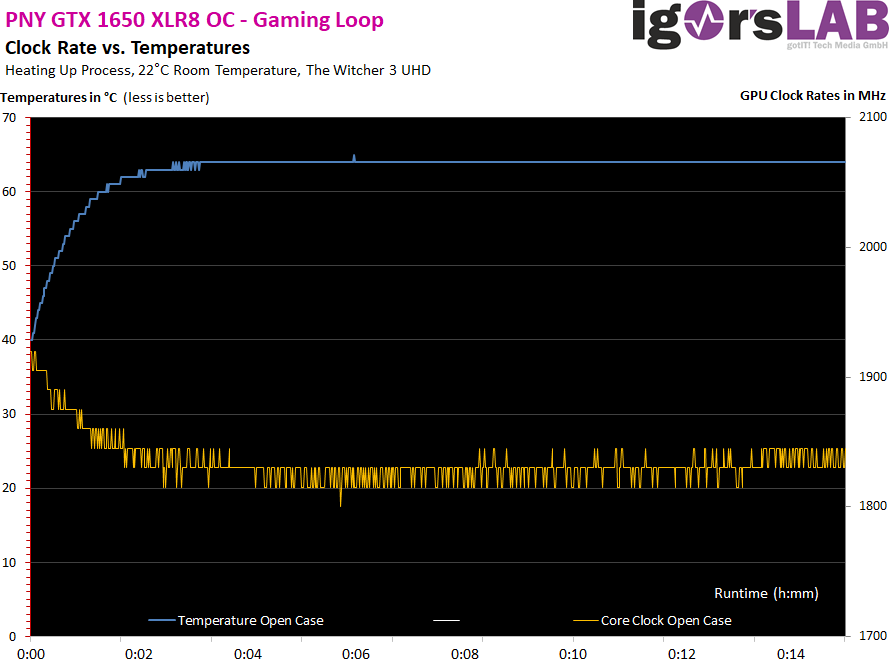
During the stress test, the clock rates then break down somewhat, which is also due to the limited power limit:
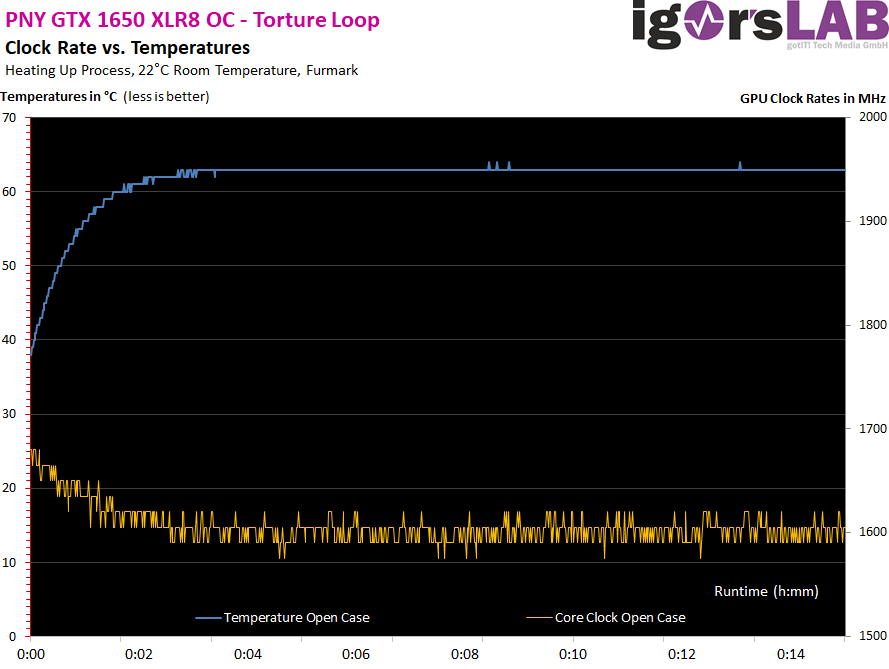
And now the whole thing again in sober numbers in table form:
| Initial PNY GeForce GTX 1650 XLR8 OC |
Final value PNY GeForce GTX 1650 XLR8 OC |
|
|---|---|---|
| Open Benchtable | ||
| GPU Temperatures |
38 °C | 63 to 64 °C |
| GPU clock | 1920 MHz | 1830 to 1860 MHz |
| Ambient temperature | 22 °C | 22°C (33°C closed) |
Board Analysis: Infrared Images
The infrared images below show the gaming and torture loops. The differences are hardly visible and the cooler acts quite confidently. Of course, the measured approx. 62 Watts also nothing that you couldn’t cool away with a wet finger and a gesture of nonchalance. The GPU’s voltage converters, although uncooled, remain below 83°C and the warmest memory module is 71°C.
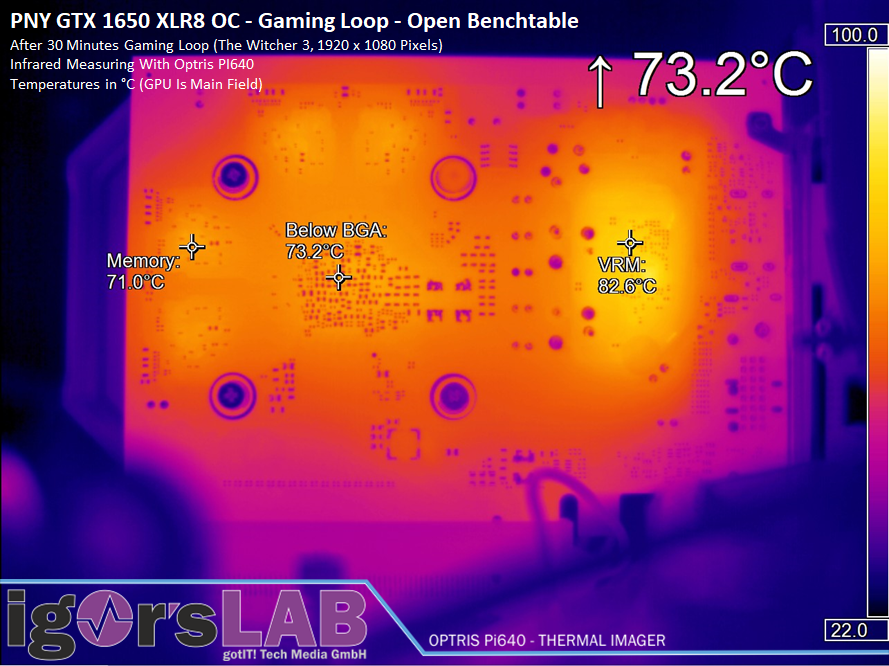
The stress test gives a very similar picture. The duct-only memory increases by 12 degrees compared to gaming, the GPU is one degree below, and the GPU voltage converters increase by a narrow degree. That, too, is still acceptable.
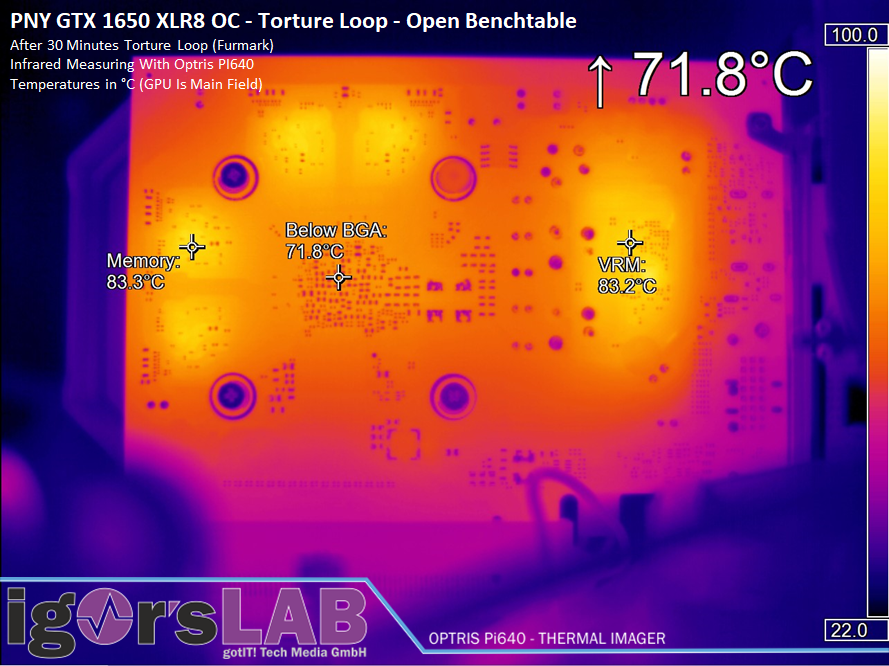
















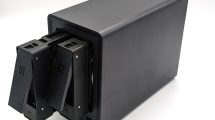
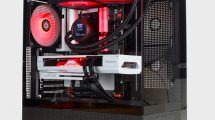
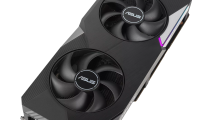








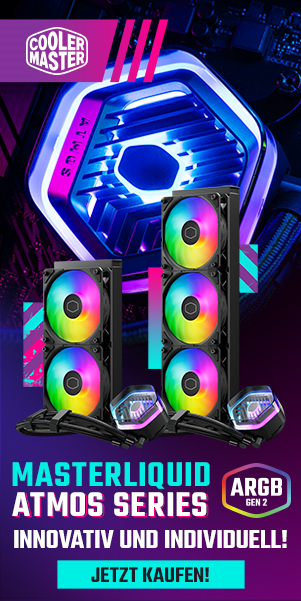


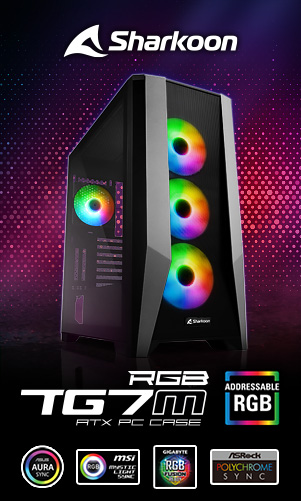


Kommentieren